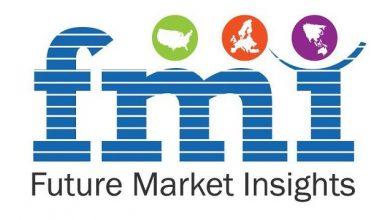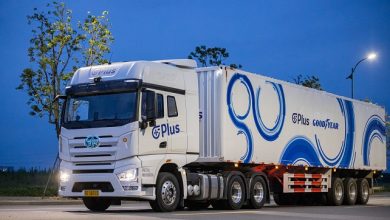Global overseas ADAS and autonomous driving Tier 1 suppliers market to 2025
Germany has become the first country in the world to allow L4 autonomous vehicles onto public roads

The ‘Overseas ADAS and Autonomous Driving Tier 1 Suppliers Report, 2022’ report has been added to ResearchAndMarkets.com’s offering.
The gap between suppliers has widened in terms of revenue growth, and many of them plan to launch L4 products by 2025, countries allow L3/L4 vehicles on the road to a limited extent.
Germany enacted Autonomous Driving Act in July 2021. Through its new legislation, Germany has become the first country in the world to allow L4 autonomous vehicles onto public roads without requiring a human backup safety driver behind the wheel. Application scenarios include: shuttle buses, short-distance public transport in urban areas, logistics between distribution centers, demand-oriented off-peak passenger transport in rural areas, first/last mile passenger or cargo transport, automated parking of dual-mode vehicles.
Japan’s government planned to amend traffic laws to allow L4 autonomous vehicles to drive on some roads and ask lawmakers to approve the change as early as March 2022. Under the revised law, a license system will be introduced for operators of transport services using autonomous vehicles with L4 autonomy. Operators will be required to assign a chief monitor who can supervise the operation by riding a car or through remote control and can command multiple vehicles simultaneously. Japan aims to achieve L4 by 2025, which would allow private cars and delivery trucks (platooning) to operate on expressways, as market-oriented application.
In March 2022, the U.S. Department of Transportation’s National Highway Traffic Safety Administration (NHTSA) issued the `Occupant Protection Regulations for Automated Vehicles`, stating that fully autonomous cars no longer need to be equipped with traditional manual control devices such as steering wheels, brakes or accelerator pedals. The United States plans to realize the market-oriented application of L3 passenger cars in low-risk driving environments such as urban commuting, and L4 passenger cars on expressways (like going on/off ramps, autonomous lane change) by 2025.
In July 2022, Shenzhen, China issued `Regulations on Administration of Intelligent Connected Vehicles in Shenzhen Special Economic Zone`, allowing L3 autonomous vehicles to be tested and demonstrated on open roads in administrative areas with relatively sound CVIS infrastructure.
The ADAS business of major Tier 1 suppliers maintains rapid growth and they vigorously deploy L3/L4 products
In 2021, a number of Tier 1 suppliers saw the sales related to autonomous driving swell by more than 10% year-on-year. For example, ZF’s Electronics & ADAS Division earned sales of EUR1.84 billion, a year-on-year increase of 17.9%; the sales of Magna’s Power & Vision Division jumped 17.0% year-on-year to USD11.34 billion; Veoneer secured sales of USD869 million from active safety, a year-on-year spike of 39.3%.
Bosch plans to mass-produce the domain controller DASy 2.0 supporting L3/L4 in 2022, spawn L3 driving solutions in 2023, and launch the domain controller DASy+Cloud in 2025.
Denso aims to achieve sales of JPY500 billion in ADAS field in 2025. In terms of products, mass production of L3 and L4 products will be accomplished in 2023 and 2025 respectively.
In 2021, Continental recorded EUR 7.559 billion in the revenue of its autonomous driving and safety business, accounting for 23.7% and edging up 0.8% year-on-year which was lower than that of its competitors. Continental will mass-produce L4 autonomous driving products for urban roads in 2023, and L5 products after 2025.
In 2021, Valeo Comfort & Driving Assistance Systems Business Group garnered EUR3.417 billion in revenue with a year-on-year spike of 6%, of which autonomous driving contributed EUR1.9 billion or 56%. The ADAS sales will reach EUR4 billion in 2025, with CAGR of 20.5%. Valeo says SCALA 3, the third-generation MEMS solid-state LiDAR released by Valeo in November 2021, which will be commercialized in 2024, offers 12 times better resolution, three times longer range and a viewing angle that is 2.5 times wider than the second-generation. SCALA 3 supports L3 autonomous driving below 130km/h.
Key Topics Covered:
1 Global Traffic Regulations and Development Planning for Autonomous Driving
1.1 Global Traffic Regulations on Autonomous Driving
1.1.1 UNECE Automated Lane Keeping System (ALKS) Regulation
1.1.2 Autonomous Driving Development Planning in Some Countries/Regions Worldwide
1.2 China’s Traffic Regulations on Autonomous Driving
1.2.1 China’s Management Specifications for Road Tests and Demonstrative Application of Intelligent Connected Vehicles (Trial)
1.2.2 Access Conditions of Open Road Tests in China
1.2.3 China’s Autonomous Driving Development Planning
1.2.4 China’s Intelligent Connected Vehicle Technology Roadmap: Phased Development Goals and Milestones of Passenger Cars
1.3 EU’s Traffic Regulations on Autonomous Driving
1.3.1 Autonomous Driving Act in Germany
1.3.2 Autonomous Driving Development Planning of EU & Europe
1.3.3 EU’s Autonomous Driving Roadmap and Outlook in 2040
1.4 Traffic Regulations on Autonomous Driving and Planning of the U.S. by State
1.5 Japan’s Traffic Regulations on Autonomous Driving
1.5.1 Japan’s Action Plan for Realizing and Popularizing Autonomous Driving 4.0 – Classification of Driving Environments for Autonomous Vehicles
1.5.2 Japan’s Autonomous Driving Development Planning
1.5.3 Japan’s”RoAD to the L4 Project” – Four Themes
1.6 South Korea’s Traffic Regulations on Autonomous Driving and Planning
1.7 Singapore’s Traffic Regulations on Autonomous Driving
2 Summary and Comparison of Overseas Major Autonomous Driving Tier 1 Suppliers
2.1 Overview of Overseas Major Autonomous Driving Tier 1 Suppliers
2.2 Sales/Revenue of Overseas Major Autonomous Driving Tier 1 Suppliers, 2021
2.3 Products and Customers of Overseas Major Autonomous Driving Tier 1 Suppliers
2.4 Lidar and Customers of Overseas Major Autonomous Driving Tier 1 Suppliers
2.5 Domain Controllers and Customers of Overseas Major Autonomous Driving Tier 1 Suppliers
2.6 Solutions and Customers of Overseas Major Autonomous Driving Tier 1 Suppliers
3 Overseas Major Autonomous Driving Tier 1 Suppliers
3.1 Continental
3.1.1 Profile
3.1.2 Revenue
3.1.3 Management Structure
3.1.4 Autonomous Driving Product Layout
3.1.5 Autonomous Driving Product Lineup
3.1.6 Autonomous Driving Product – Camera
3.1.7 Autonomous Driving Product – Driver Monitoring
3.1.8 Autonomous Driving Product – Cockpit Monitoring
3.1.9 Autonomous Driving Product – Radar
3.1.10 Autonomous Driving Product – LiDAR
3.1.11 Autonomous Driving Product – Domain Controller
3.1.12 Autonomous Driving Product – Ultrasonic Radar
3.1.13 Autonomous Driving Product – Automated Parking Solution
3.1.14 Autonomous Driving Product – Autonomous Driving Solution
3.1.15 Autonomous Driving Product – Autonomous Driving Solution for Passenger Transport
3.1.16 Autonomous Driving Product – 5G& V2X
3.1.17 Autonomous Driving Planning
3.1.18 Autonomous Driving Partners
3.1.19 Market Layout of Main Autonomous Driving Products
3.1.20 Summary
3.2 Bosch
3.3 Magna
3.4 ZF
3.5 Valeo
3.6 Denso
3.7 Hyundai Mobis
3.8 Veoneer
3.9 Aptiv
3.10 Visteon



